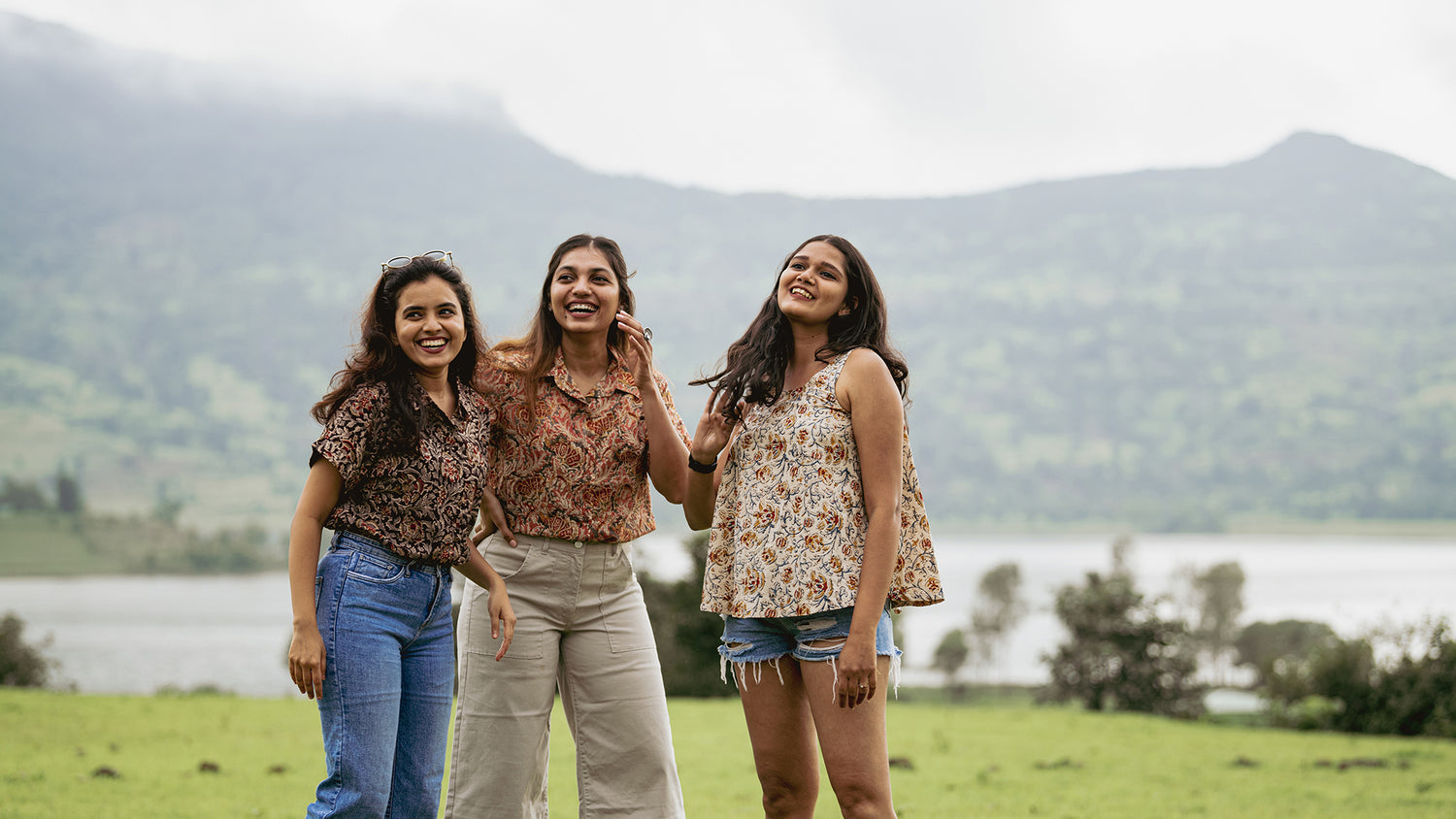Leheriya
Leheriya is a traditional craft from Rajasthan, which involves creating white or colored stripes on fabric using tie & dye method. The unique pattern of Leheriya is inspired by the waves or Leher that appear when the wind blows over the sand dunes of the deserts in Rajasthan. The vivid colours and captivating designs capture the cultural essence of the region.



The craft is traditionally practiced to make Safa which is the Rajasthan Turban, as well as Dupattas, Sarees. Leheriya Dupattas/Sarees are gifted to new brides and worn during festivals in Rajasthan. The craft has a rich history, flourishing under the patronage of Rajasthan's royal families. Turbans were a symbol of status, with different colors representing different royal houses. The king of Jaipur (also known as Pink City) famously wore a Pink turban. It is also believed that the term "Rani Pink" became popular due to the queen's fondness for that shade.
Tie & dye method is called Bandhaai-Rangaai in Rajasthan. Artisans who tie are called Bandhere and those who dye are Neelgar or Rangrez. Neelgar traditionally only worked with the colour Neela or Indigo. These days, azo-free dyes are widely used by Leheriya artisans, along with natural dyes. Both types are non-toxic and safe for the skin. Unlike chemical dyes, they do not pose harm to the health of artisans who regularly come into contact with them.
Apart from diagonal stripes, artisans also create V or W patterns using the same technique. Another traditional pattern is called “Mothra” which is a checkered pattern where the dyed and opened fabric is rolled, tied and dyed again from the opposite side, making the stripes intersect. The picture below shows the beautiful Mothra design done on Kota fabric,

Leheriya is practiced on various fabric types like Kota, Georgette, Chiffon, Chanderi silk, Tussar silk etc. The process of Leheriya starts by rolling the fabric diagonally from one corner to the other creating approx 32 layers. It is then tied equidistantly with threads to create patterns. The thickness of the ties determines the width of the stripes. As the length increases, more strength and space is needed. Cotton fabric requires more strength while silk needs to be handled with care while tying. Tying is predominantly carried out by women artisans in their own homes.
The tied fabric is then soaked in water for half an hour. Next, it is spun in a drier to remove excess water. The fabric needs to be quite damp for it to uniformly absorb the dye. Dye is prepared by using around 6grams of dye powder per meter of fabric. According to the tones, the quantity is further adjusted. A more diluted solution is needed for light pastel colours while a thicker solution is required for deeper, darker ones. Dye solution needs to be hot for colour fastening (pakka rang). If cold solution is used, then the fabric is not colourfast (kachha rang).

The prepared dye is boiled and passed through a sieve into a large copper vessel containing water and liquid soap. The tied white fabric is then soaked in this solution and mixed rigorously for some time. The whole mixture of fabric and dye solution is transferred to another vessel and boiled again. It takes half an hour for the dye to penetrate to all layers of the fabric.


The tie-dyed fabric is dried in the sun for a day for the colours to bring out a shine. It is brought back indoors for untying which is means the process is towards the end. Fabric is tied clockwise and untied anticlockwise. Untying the fabric reveals a beautiful vibrant pattern. The fabric soaked in alum water which acts as a colour fixative, and then ironed to remove any creases.


Throughout the process, attention to detail and care are essential. The heritage and artistic value of Leheriya as a craft is integral to Rajasthan's culture. It is not just a craft; it's a testament to the skill and creativity of Rajasthan's artisans, passed down through generations. The bright colours and captivating designs of Leheriya vividly capture the cultural essence of the region.

